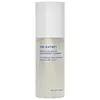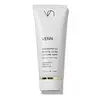What's inside
What's inside
 Key Ingredients
Key Ingredients

 Benefits
Benefits

 Concerns
Concerns

No concerns
 Ingredients Side-by-side
Ingredients Side-by-side

Water
Skin ConditioningGlycerin
HumectantPropanediol
SolventDecyl Glucoside
CleansingCaprylyl Caprylate
EmollientCaprylyl Glucoside
CleansingCassia Angustifolia Seed Polysaccharide
Skin ConditioningChamomilla Recutita Flower Extract
MaskingHelianthus Annuus Extract
EmollientCitrus Aurantium Dulcis Fruit Water
MaskingCitrus Limon Fruit Water
MaskingHelianthus Annuus Seed Oil
EmollientPersea Gratissima Oil
Skin ConditioningVitis Vinifera Seed Oil
EmollientRosmarinus Officinalis Leaf Extract
AntimicrobialPyrus Malus Fruit Extract
Skin ConditioningOryza Sativa Bran Extract
Skin ConditioningSerine
MaskingAlanine
MaskingGlycine
BufferingLysine Hcl
Skin ConditioningThreonine
Arginine
MaskingProline
Skin ConditioningHydrogenated Palm Glycerides Citrate
EmollientHeptyl Glucoside
Phenoxyethanol
PreservativeDehydroxanthan Gum
Emulsion StabilisingCoco-Glucoside
CleansingGlyceryl Oleate
EmollientCaprylyl Glycol
EmollientGlutamic Acid
HumectantPCA
HumectantCitric Acid
BufferingTrisodium Ethylenediamine Disuccinate
Tocopherol
AntioxidantBetaine
HumectantPotassium Hydroxide
BufferingPotassium Sorbate
PreservativeSodium Benzoate
MaskingSodium Lactate
BufferingSodium PCA
HumectantWater, Glycerin, Propanediol, Decyl Glucoside, Caprylyl Caprylate, Caprylyl Glucoside, Cassia Angustifolia Seed Polysaccharide, Chamomilla Recutita Flower Extract, Helianthus Annuus Extract, Citrus Aurantium Dulcis Fruit Water, Citrus Limon Fruit Water, Helianthus Annuus Seed Oil, Persea Gratissima Oil, Vitis Vinifera Seed Oil, Rosmarinus Officinalis Leaf Extract, Pyrus Malus Fruit Extract, Oryza Sativa Bran Extract, Serine, Alanine, Glycine, Lysine Hcl, Threonine, Arginine, Proline, Hydrogenated Palm Glycerides Citrate, Heptyl Glucoside, Phenoxyethanol, Dehydroxanthan Gum, Coco-Glucoside, Glyceryl Oleate, Caprylyl Glycol, Glutamic Acid, PCA, Citric Acid, Trisodium Ethylenediamine Disuccinate, Tocopherol, Betaine, Potassium Hydroxide, Potassium Sorbate, Sodium Benzoate, Sodium Lactate, Sodium PCA
Water
Skin ConditioningGlycerin
HumectantPortulaca Oleracea Extract
Skin ConditioningPoria Cocos Polysaccharide
Skin ConditioningCocoglycerides
EmollientHelianthus Annuus Seed Oil
EmollientButylene Glycol
HumectantCorylus Avellana Seed Oil
EmollientHydrogenated Lecithin
EmulsifyingGlycine Max Polypeptide
Skin ConditioningCetearyl Alcohol
EmollientSodium Polygamma-Glutamate
Emulsion StabilisingPropanediol
SolventAmmonium Acryloyldimethyltaurate/Vp Copolymer
Stearic Acid
CleansingScutellaria Baicalensis Root Extract
AstringentPaeonia Suffruticosa Root Extract
Skin ProtectingPullulan
Synthetic Beeswax
Emulsion StabilisingHelianthus Annuus Flower
Skin ConditioningHelianthus Annuus Seed Wax
Skin ConditioningCoco-Caprylate/Caprate
EmollientBehenyl Alcohol
EmollientStearyl Alcohol
EmollientAcmella Oleracea Extract
Skin ProtectingHydrogenated Olive Oil
Skin ConditioningHydrogenated Olive Oil Unsaponifiables
EmollientBehenic Acid
CleansingGinsenosides
Skin ConditioningDipeptide Diaminobutyroyl Benzylamide Diacetate
Skin ConditioningAcetyl Hexapeptide-8
HumectantPalmitoyl Tripeptide-1
Skin ConditioningPalmitoyl Pentapeptide-4
Skin ConditioningCopper Tripeptide-1
Skin ConditioningEllagic Acid
Skin ConditioningSh-Polypeptide-64
AntioxidantCamellia Sinensis Catechins
AntioxidantJojoba Esters
EmollientPolyglyceryl-6 Distearate
EmulsifyingPolyglyceryl-3 Beeswax
Emulsifying1,2-Hexanediol
Skin ConditioningDipotassium Glycyrrhizate
HumectantArginine
MaskingCarbomer
Emulsion StabilisingMyristic Acid
CleansingXanthan Gum
EmulsifyingAdenosine
Skin ConditioningCetyl Alcohol
EmollientCyclodextrin
AbsorbentWater, Glycerin, Portulaca Oleracea Extract, Poria Cocos Polysaccharide, Cocoglycerides, Helianthus Annuus Seed Oil, Butylene Glycol, Corylus Avellana Seed Oil, Hydrogenated Lecithin, Glycine Max Polypeptide, Cetearyl Alcohol, Sodium Polygamma-Glutamate, Propanediol, Ammonium Acryloyldimethyltaurate/Vp Copolymer, Stearic Acid, Scutellaria Baicalensis Root Extract, Paeonia Suffruticosa Root Extract, Pullulan, Synthetic Beeswax, Helianthus Annuus Flower, Helianthus Annuus Seed Wax, Coco-Caprylate/Caprate, Behenyl Alcohol, Stearyl Alcohol, Acmella Oleracea Extract, Hydrogenated Olive Oil, Hydrogenated Olive Oil Unsaponifiables, Behenic Acid, Ginsenosides, Dipeptide Diaminobutyroyl Benzylamide Diacetate, Acetyl Hexapeptide-8, Palmitoyl Tripeptide-1, Palmitoyl Pentapeptide-4, Copper Tripeptide-1, Ellagic Acid, Sh-Polypeptide-64, Camellia Sinensis Catechins, Jojoba Esters, Polyglyceryl-6 Distearate, Polyglyceryl-3 Beeswax, 1,2-Hexanediol, Dipotassium Glycyrrhizate, Arginine, Carbomer, Myristic Acid, Xanthan Gum, Adenosine, Cetyl Alcohol, Cyclodextrin
Ingredients Explained
These ingredients are found in both products.
Ingredients higher up in an ingredient list are typically present in a larger amount.
Arginine is an amino acid that is important for human development. Your body uses is it to produce hair keratin and skin collagen.
As a cosmetic ingredient, Arginine has antioxidant properties and can also help repair damaged skin. This ingredient is derived either synthetically or from animals.
Arginine isn't fungal acne safe when used in the presence of other lipids (fats, fatty acids, oils, esters, etc). Oils and fats occur naturally within the skin, so take caution when using Arginine if you're prone to fungal acne.
Learn more about ArginineGlycerin is already naturally found in your skin. It helps moisturize and protect your skin.
A study from 2016 found glycerin to be more effective as a humectant than AHAs and hyaluronic acid.
As a humectant, it helps the skin stay hydrated by pulling moisture to your skin. The low molecular weight of glycerin allows it to pull moisture into the deeper layers of your skin.
Hydrated skin improves your skin barrier; Your skin barrier helps protect against irritants and bacteria.
Glycerin has also been found to have antimicrobial and antiviral properties. Due to these properties, glycerin is often used in wound and burn treatments.
In cosmetics, glycerin is usually derived from plants such as soybean or palm. However, it can also be sourced from animals, such as tallow or animal fat.
This ingredient is organic, colorless, odorless, and non-toxic.
Glycerin is the name for this ingredient in American English. British English uses Glycerol/Glycerine.
Learn more about GlycerinHelianthus Annuus Seed Oil is the oil derived from the seeds of a Sunflower. Sunflower seed oil is non-fragrant. It is an emollient, meaning it helps to soften the skin.
Sunflower seed oil contains many fatty acids. The fatty acids found in sunflower seeds include (from highest amount to least): linoleic acid, myristic acid, palmitic acid, stearic acid, arachidic acid, oleic acid, and linolenic acid.
These fatty acids help the skin create ceramides. Ceramides play a role in repairing the skin barrier.
Helianthus Annuus Seed Oil helps moisturize the skin. This in turn helps the skin look more rejuvenated and smoother.
Sunflowers are rich in vitamin E.
Historians believe Indigenous cultures of North America domesticated sunflowers before corn. Thus they relied on sunflower oil for a variety of uses. One such use is moisturizing skin and hair.
Sunflower seed oil may not be fungal acne safe. We recommend speaking with a professional if you have any concerns.
Learn more about Helianthus Annuus Seed OilPropanediol is an all-star ingredient. It softens, hydrates, and smooths the skin.
It’s often used to:
Propanediol is not likely to cause sensitivity and considered safe to use. It is derived from corn or petroleum with a clear color and no scent.
Learn more about PropanediolWater. It's the most common cosmetic ingredient of all. You'll usually see it at the top of ingredient lists, meaning that it makes up the largest part of the product.
So why is it so popular? Water most often acts as a solvent - this means that it helps dissolve other ingredients into the formulation.
You'll also recognize water as that liquid we all need to stay alive. If you see this, drink a glass of water. Stay hydrated!
Learn more about Water